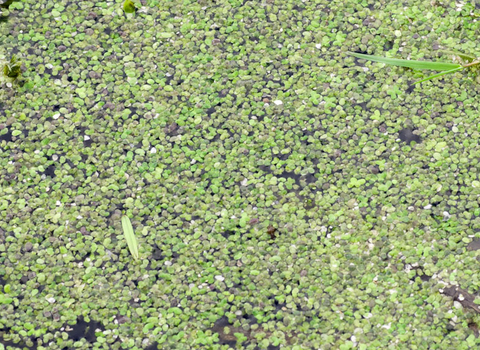
©northeastwildlife.co.uk
Common duckweed
The vast, green mats that sometimes cover the surface of still water, such as ponds, flooded gravel pits and old canals, are actually Common duckweed. A tiny, single plant, it groups together to form 'lawns'.
Scientific name
Lemna minorWhen to see
January to DecemberTop facts
Category
Stats
Individual plant diameter: 1.5-5mmRoot length: 15mm
Common.
